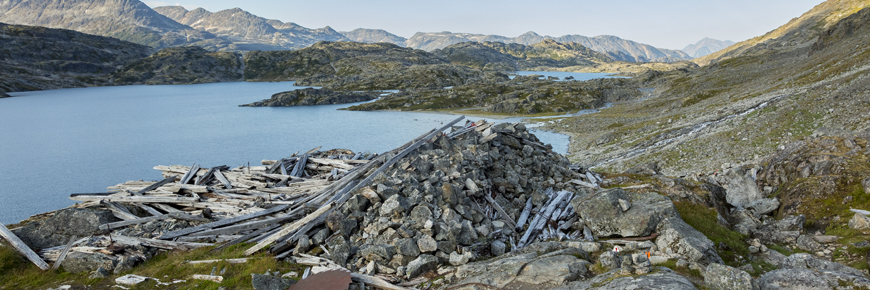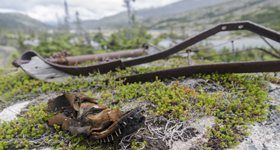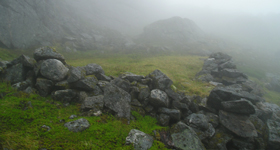
Cultural landscape
Chilkoot Trail National Historic Site
The contrast between the scenic grandeur of the Coastal Mountains and the fragile remains of the stampeders' goods and temporary structures makes the Chilkoot a unique backcountry trail.
Artifacts

The remains of supplies, equipment, and machinery from the Gold Rush are strewn along the route of the Chilkoot Trail. Boot soles, tin cans, tramway pilings and canvas boats are items that were brought in and, for various reasons, abandoned by the stampeders. These artifacts, and their placement within the landscape, combine to create a living exhibit of Gold Rush history. Removed from their original location and setting, artifacts lose much of their historical significance. As the value of an artifact is dependent upon it's context, it is important that they not be moved or tampered with.
Cultural landscape features

Modification of the landscape by the stampeders is an irreplaceable record of Gold Rush activity on the Chilkoot Trail. Stone tent platforms, rock quays at the shores of a lake, the routing choices of the trail, and other cultural landscape features are not always obvious, but nevertheless speak to the lives of the stampeders and can serve to trigger the imagination as to what life was like for those who came over Chilkoot Pass during the gold rush. An apparent jumble of rocks observed from one angle may upon closer inspection reveal itself to be the foundation of a hotel; tampering with these features will destroy the story of their past.
Related links
- Date modified :